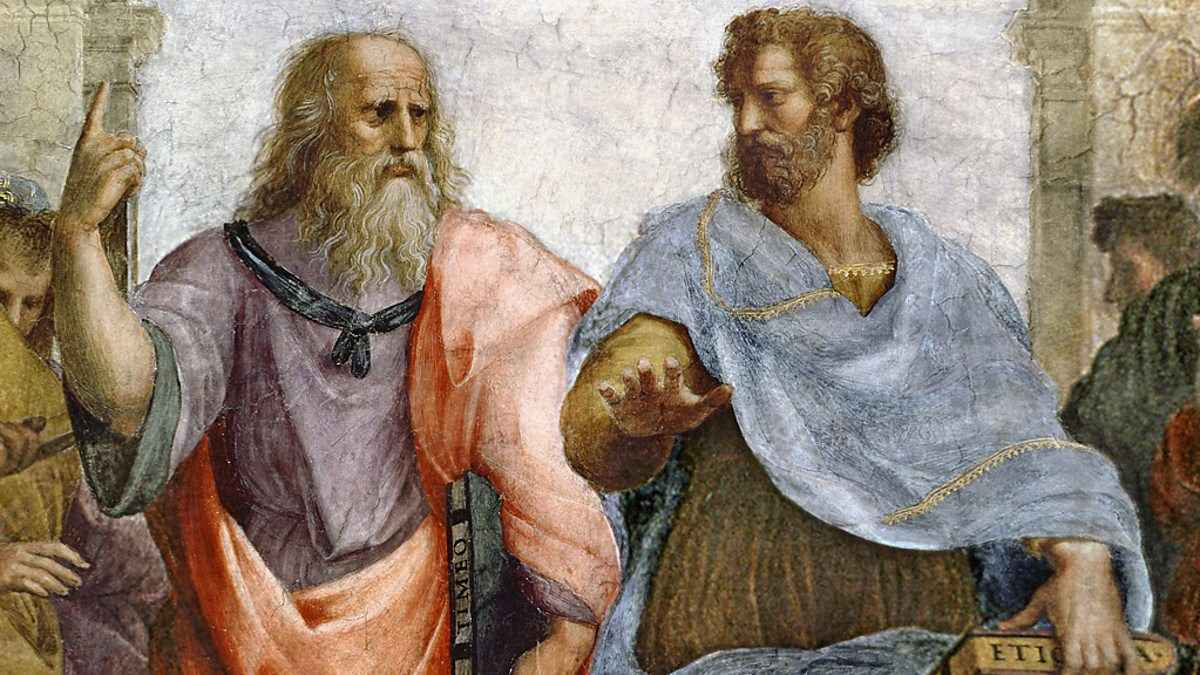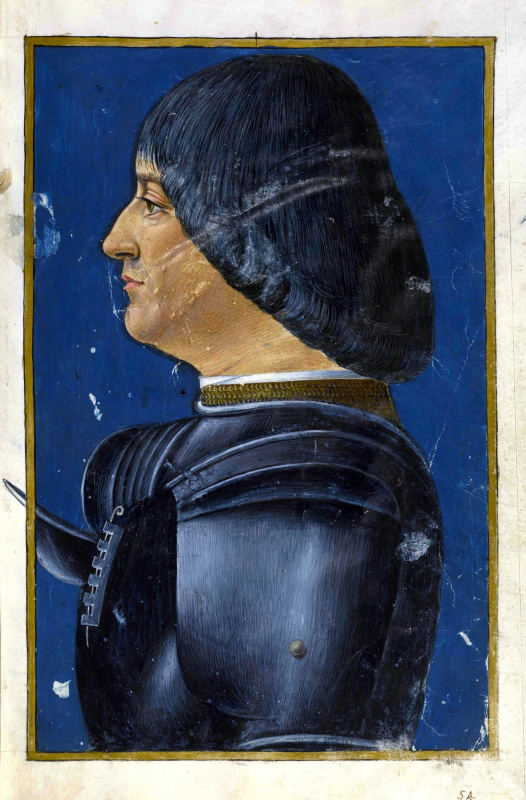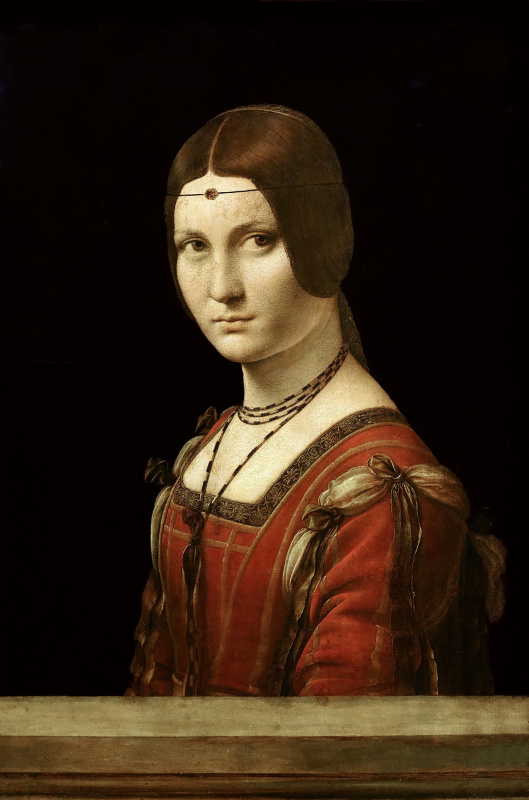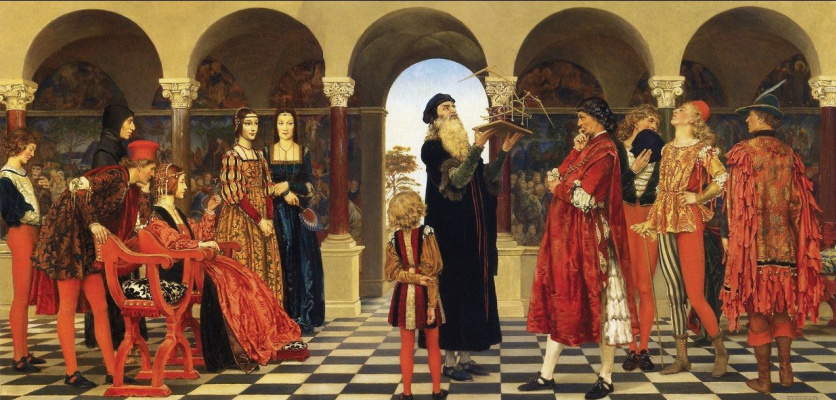In the literary heritage of Leonardo da Vinci there are so-called "prophecies". Adopting the riddle form, the artist created prophecies that portrayed scenes from the future. Plots of these riddles are mostly dreadful, like Bosch's best paintings, but their solutions are quite simple. First we’ll tell you a little about those riddle-like prophecies, and then we’ll challenge you to solve a dozen of them.

"Prophecies are actually riddle games. There is no doubt that they had a secular purpose and, perhaps, even just a court one. Leonardo came up with a whole heap of such enigmi or proiezione at once and immediately made series of them in his notebooks," explains art historian Abram Efros. "He obviously prepared them for an occasion when members of high society gathered and it was pleasant or necessary to entertain them. It can be assumed from the data collection that the Prophecies were created during the artist’s Milan period to the needs of Lodovico Moro and his entourage and were part of the "entertainments" that Leonardo supplied his patron and master with."
Da Vinci did not make the portrait of Lodovico Moro (also known as Ludovico Sforza), but his pupil, Giovanni Ambrogio de Predis, did. However, da Vinci, as commonly cited, painted two of his patron’s mistresses — Cecilia Gallerani in the image of a lady with an ermine and Lucrezia Crivelli, known to us today as La Belle Ferroniere.
Here is one of Leonardo’s prophecies (most often he wrote them down along with the correct answers):
— Then many of the men who will remain alive, will throw the victuals they have preserved out of their houses.
What does it remind you of? Of the stupidity that struck humanity? Of a trendy diet? Not at all. "Of sowing seed" — wrote Leonardo next to the prophecy.
Abram Efros explains how Leonardo’s riddles work: "What was the game about? The thing is that the verbal description of the phenomenon, true in its separate characteristics, was quite different from the essence of the thing described. Thus, the ordinary thing turned into its opposite; the listener had to recognize and name the thing by its name. Leonardo’s verbal art consisted in, on the one hand, maximally separating the description of the thing from its actual image, and on the other hand, not breaking the bonds between them. He did it masterfully. He worked as a word jeweler. If you don’t know the purpose of these passages, they may give the impression of some kind of grandiose nightmares."
Indeed, some of Leonardo’s riddles sound as if the illustrations for them can be easily found among Bosch’s artworks. By the way, there is a version — and quite a plausible one — about the content and purpose of The Garden of Earthly Delights by Bosch: the triptych is full of rebuses, solving which, the commissioner and his guests could have fun. Bosch and Leonardo are also similar in their attitude towards church.
— Then many of the men who will remain alive, will throw the victuals they have preserved out of their houses.
What does it remind you of? Of the stupidity that struck humanity? Of a trendy diet? Not at all. "Of sowing seed" — wrote Leonardo next to the prophecy.
Abram Efros explains how Leonardo’s riddles work: "What was the game about? The thing is that the verbal description of the phenomenon, true in its separate characteristics, was quite different from the essence of the thing described. Thus, the ordinary thing turned into its opposite; the listener had to recognize and name the thing by its name. Leonardo’s verbal art consisted in, on the one hand, maximally separating the description of the thing from its actual image, and on the other hand, not breaking the bonds between them. He did it masterfully. He worked as a word jeweler. If you don’t know the purpose of these passages, they may give the impression of some kind of grandiose nightmares."
Indeed, some of Leonardo’s riddles sound as if the illustrations for them can be easily found among Bosch’s artworks. By the way, there is a version — and quite a plausible one — about the content and purpose of The Garden of Earthly Delights by Bosch: the triptych is full of rebuses, solving which, the commissioner and his guests could have fun. Bosch and Leonardo are also similar in their attitude towards church.
On the left — the fragment of the right, "hellish" panel of The Garden of Earthly Delights by Bosch.
And here is a similar riddle-like prophecy by Leonardo:
— Many will there be who will give up work and labour and poverty of life and goods, and will go to live among wealth in splendid buildings, declaring that this is the way to make themselves acceptable to God.
Correct answer: Of churches and the habitations of friars.
On the left — a fragment of The Triptych of Temptation of St. Anthony by Hieronymus Bosch.
And here is an equally sinister riddle from da Vinci:
— Serpents of great length will be seen at a great height in the air, fighting with birds.
Correct answer: Of snakes, carried by storks.
So, you already understand what the prophecies of Leonardo da Vinci are like and how you need to think in order to solve them. Imagine that you are a high-ranking guest at the court of Ludovico Sforza and let’s get it started!
You can see the correct answers at the end of the article. Don’t look there straightaway yet! For each riddle, we’ve chosen a painting, giving a clue. Try using them first.
You can see the correct answers at the end of the article. Don’t look there straightaway yet! For each riddle, we’ve chosen a painting, giving a clue. Try using them first.
1. Many will there be who, flaying their mother, will tear the skin from her back. (a hint from Aleksei Venetsianov)
2. Men will take pleasure in seeing their own work destroyed and injured. (a hint from Vincent van Gogh)
3. Many persons puffing out a breath with too much haste, will thereby lose their sight, and soon after all consciousness. (a hint from Georges de La Tour)
4. The skins of animals will rouse men from their silence with great outcries and curses. (a hint from Henri Rousseau)
5. Oxen will be to a great extent the cause of the destruction of cities, and in the same way horses and buffaloes. (a hint from Vasily Vereshchagin)
6. Many offspring shall be snatched by cruel thrashing from the very arms of their mothers, and flung on the ground, and crushed. (a hint from Willem van Aelst)
7. The Forests will bring forth young which will be the cause of their death. (a hint from Kazimir Malevich)
8. Many dead things will move furiously, and will take and bind the living, and will ensnare them for the enemies who seek their death and destruction. (a hint from Diego Vázquez)
9. The greatest honours will be paid to men, and much pomp, without their knowledge. (a hint from El Greco)
10. Men will speak to men who hear not; having their eyes open, they will not see; they will speak to these, and they will not be answered. They will implore favours of those who have ears and hear not; they will make light for the blind. (a hint from Mikhail Nesterov)
11. Men will be seen so deeply ungrateful that they will turn upon that which has harboured them, for nothing at all; they will so load it with blows that a great part of its inside will come out of its place, and will be turned over and over in its body. (a hint from Albrecht Dürer)
12. The high walls of great cities will be seen upside down in their ditches. (a hint from Claude Monet)
2. Men will take pleasure in seeing their own work destroyed and injured. (a hint from Vincent van Gogh)
3. Many persons puffing out a breath with too much haste, will thereby lose their sight, and soon after all consciousness. (a hint from Georges de La Tour)
4. The skins of animals will rouse men from their silence with great outcries and curses. (a hint from Henri Rousseau)
5. Oxen will be to a great extent the cause of the destruction of cities, and in the same way horses and buffaloes. (a hint from Vasily Vereshchagin)
6. Many offspring shall be snatched by cruel thrashing from the very arms of their mothers, and flung on the ground, and crushed. (a hint from Willem van Aelst)
7. The Forests will bring forth young which will be the cause of their death. (a hint from Kazimir Malevich)
8. Many dead things will move furiously, and will take and bind the living, and will ensnare them for the enemies who seek their death and destruction. (a hint from Diego Vázquez)
9. The greatest honours will be paid to men, and much pomp, without their knowledge. (a hint from El Greco)
10. Men will speak to men who hear not; having their eyes open, they will not see; they will speak to these, and they will not be answered. They will implore favours of those who have ears and hear not; they will make light for the blind. (a hint from Mikhail Nesterov)
11. Men will be seen so deeply ungrateful that they will turn upon that which has harboured them, for nothing at all; they will so load it with blows that a great part of its inside will come out of its place, and will be turned over and over in its body. (a hint from Albrecht Dürer)
12. The high walls of great cities will be seen upside down in their ditches. (a hint from Claude Monet)
In the painting above, Leonardo da Vinci demonstrates one of his paintings of Ludovico Sforza. We can see his wife, Beatrice d’Este, sitting. However, there’s also Ludovico Sforza’s mistress Cecilia Gallerani, standing behind her. And even further there’s Elisabetta Gonzaga. Perhaps, similar methods were used in creating riddles you were trying to solve.

Most of Leonardo da Vinci’s riddle-like prophecies were written on sheets of the so-called Codex Atlanticus. It is a collection of drawings and writings by Leonardo da Vinci, consisting of 1119 large sheets. The codex was compiled after the artist’s death and is now housed in the Ambrosian Library in Milan. Above there is a page from The Codex Atlanticus with a map of Armenia. How could Leonardo see Armenia, especially from a bird’s eye view? The artist left this riddle without any answer. There’s an unusual version in this book.
The correct answers to Leonardo da Vinci's riddles:
1. Husbandmen tilling the Earth.2. Shoemakers.
3. Of putting out the light when going to bed.
4. Balls for playing games.
5. By drawing guns.
6. Of nuts, and olives, and acorns, and chestnuts, and such like.
7. The handle of the hatchet.
8. Iron, which comes from underground is dead but the weapons are made of it which kill so many men.
9. Of funeral rites, and processions, and lights, and bells, and followers.
10. Of worshipping the pictures of saints.
11. Of beating beds to renew them.
12. Of the reflection of walls of cities in the water of their ditches.
Leonardo da Vinci’s prophecies, translated into Russian, are cited from the publication Leonardo da Vinci. Selected works in two volumes. Edited by A. Dzhivelegov and A. Efros (1935, republished by Artemy Lebedev Studio in 2010).
Cover illustration: Leonardo da Vinci as Plato (on the left) and Aristotle on the fresco School of Athens by Rafael.
Collected by: Natalia Azarenko, Natalia Kandaurova
Cover illustration: Leonardo da Vinci as Plato (on the left) and Aristotle on the fresco School of Athens by Rafael.
Collected by: Natalia Azarenko, Natalia Kandaurova






















